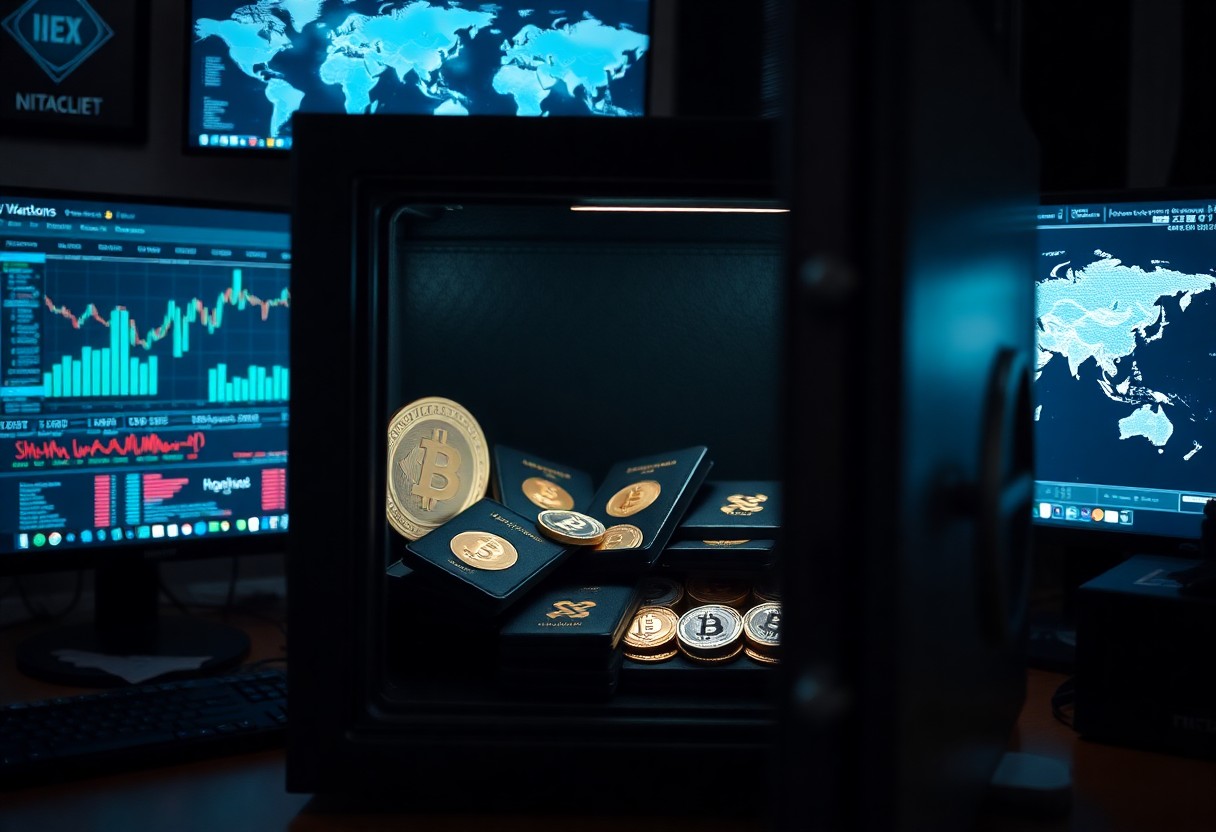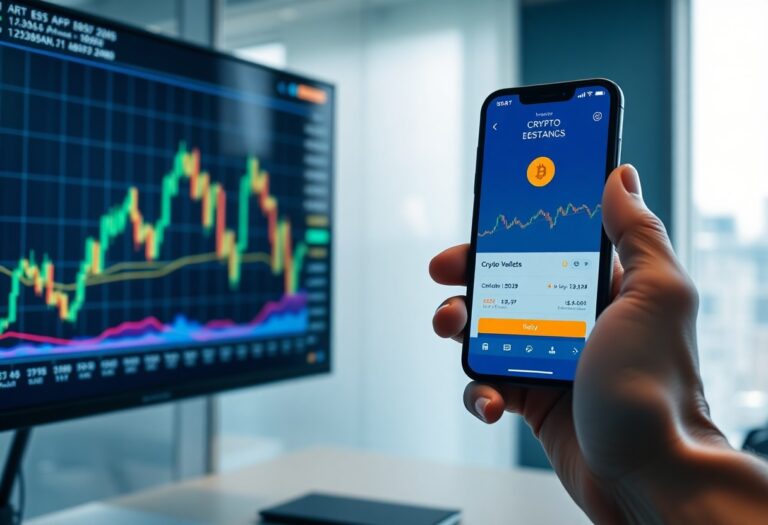How Can You Protect Your Crypto Assets for the Long Term?
Crypto assets can be a significant part of your financial portfolio, but without proper precautions, they are vulnerable to theft and volatility. To safeguard your investments, you must implement strategies such as using hardware wallets for offline storage, enabling two-factor authentication on your accounts, and staying informed about scams and security updates. By adopting these measures, you can enhance the security of your crypto assets and ensure their growth and protection over time.
Understanding Crypto Assets
Before you invest, it’s necessary to grasp what crypto assets are. These digital assets use blockchain technology to secure transactions. Their decentralized nature allows for greater control over your wealth. Being informed about cryptocurrencies and their underlying technology will empower you to make better financial decisions.
Types of Crypto Assets
Before investing further, you should become familiar with the different types of crypto assets available:
- Cryptocurrencies – Digital currencies like Bitcoin and Ethereum.
- Stablecoins – Tied to value of traditional currencies.
- Tokens – Provide rights to use a service or participate in a network.
- Non-fungible tokens (NFTs) – Unique digital assets representing ownership.
- Utility and security tokens – Used for specific applications or represent investment.
This knowledge will assist in diversifying your portfolio effectively.
| Type | Description |
| Cryptocurrencies | Digital currencies like Bitcoin and Ethereum. |
| Stablecoins | Linked to the value of traditional fiat currencies. |
| Tokens | Represent rights within a specific blockchain ecosystem. |
| Non-fungible tokens | Unique assets, often used for digital art and collectibles. |
| Utility and security tokens | Facilitate functions or represent financial stakes. |
Importance of Crypto Security
An effective approach to securing your crypto assets is vital. The nature of cryptocurrencies exposes you to various risks, including theft and fraud. By taking protective measures, you safeguard your investments from potential threats.
This emphasis on strong passwords, two-factor authentication, and hardware wallets cannot be overstated in today’s digital landscape. As cybercriminals grow more sophisticated, your assets become more vulnerable. Engaging in proactive security practices ensures that your investments remain protected, allowing you peace of mind while navigating the world of crypto.
Best Practices for Protecting Crypto Assets
You should implement various strategies to safeguard your crypto assets effectively. Regularly update your security measures, use strong passwords, and be aware of phishing scams. Diversify your storage options, employing both hardware and software wallets. Always remain vigilant about the latest threats in the cryptocurrency landscape to stay one step ahead in protecting your investments.
Hardware Wallets vs. Software Wallets
Software wallets offer convenience for quick transactions, while hardware wallets provide enhanced security for long-term storage. You can evaluate your needs based on how frequently you access your funds and your comfort level with managing private keys. Combining both types can optimize safety and accessibility.
Enabling Two-Factor Authentication
Crypto accounts are vulnerable to unauthorized access, making two-factor authentication necessary. By enabling 2FA, you add an extra layer of security, ensuring that even if someone obtains your password, they cannot access your account without a second verification method.
But 2FA isn’t foolproof. It’s vital to choose a reliable authentication app rather than relying on SMS codes, which can be intercepted. Regularly update your authentication settings and remain alert for any suspicious activities. Protecting your crypto assets means staying proactive and informed about potential risks and safeguarding strategies.
Long-Term Storage Strategies
Even with the volatility of cryptocurrency, implementing long-term storage strategies can help secure your assets. Utilizing methods such as cold storage and diversifying your portfolio will enhance your protection against theft and market fluctuations. Establishing a well-thought-out approach is imperative for preserving the value of your investments over time.
Cold Storage Solutions
An effective method for safeguarding your cryptocurrency is through cold storage solutions. These offline techniques, such as hardware wallets or paper wallets, minimize the risk of hacking and unauthorized access. By keeping your private keys offline, you significantly enhance the security of your digital assets.
Diversifying Your Portfolio
Storage variety across cryptocurrencies is fundamental for mitigating risks. Portfolio diversification can protect you against market downturns by spreading your investments over different assets. This strategy not only enhances growth opportunities but also reduces potential losses as market conditions fluctuate. Investing in a mix of established cryptocurrencies and emerging projects allows you to capitalize on various trends and minimize the chance of an entire financial setback.
Regular Monitoring and Updates
Your crypto assets require continuous attention to ensure their long-term protection. Regular monitoring not only helps you identify any unusual activity but also enables you to stay informed about developments in the crypto landscape, ensuring that your strategies remain effective and secure.
Keeping Software Up to Date
Before you can fully safeguard your assets, it’s necessary to keep your wallet and security software updated. New vulnerabilities are discovered regularly, so by installing updates promptly, you reduce the risk of being exposed to attacks.
Monitoring Market Trends
Between the highs and lows of the crypto market, staying informed can significantly impact your investment strategy. Keeping an eye on market trends helps you anticipate shifts that could affect your assets, allowing you to make timely decisions.
Software updates should be accompanied by vigilant observation of trends in the market. By studying price movements and trading volumes, you can identify potential opportunities or risks and adjust your portfolio accordingly. Ignoring market signals could lead to missed chances for growth or exposure to adverse events. Utilize available tools and analytical resources to track these trends, ensuring your strategies align with real-time data.
Legal and Tax Considerations
Once again, understanding the legal and tax implications is vital for securing your crypto assets. As regulations vary by country, being compliant with local laws can protect you from penalties and unexpected liabilities. Ensure that you stay updated on changes in legislation and consider consulting a legal expert specializing in cryptocurrency to navigate this complex area.
Understanding Regulatory Requirements
Alongside safeguarding your assets, you must be aware of regulatory requirements that govern cryptocurrency ownership. This includes KYC (Know Your Customer) regulations and AML (Anti-Money Laundering) policies that may apply to exchanges, wallets, and other platforms where you hold your assets.
Tax Implications of Crypto Holdings
After acquiring cryptocurrency, be aware of the tax consequences associated with your holdings. Different jurisdictions treat crypto assets differently, leading to potential tax liabilities on gains or transactions that you may not anticipate.
Due to the fluctuating nature of cryptocurrency values, you may face significant capital gains taxes when you sell or use your assets. It’s important to track your purchases and sales, as well as any income received in crypto, as failing to report these transactions could result in audits or legal issues. Understanding these implications ensures that you prepare adequately for potential tax obligations, preventing unpleasant surprises during tax season.
Choosing Reputable Exchanges and Services
Keep in mind that selecting a trustworthy exchange or service is vital for safeguarding your crypto assets. Look for platforms that are transparent, have a strong reputation, and offer robust security features. Investigate user reviews and industry feedback to ensure you’re making informed decisions that enhance your long-term investment strategy.
Evaluating Exchange Security
Reputable exchanges prioritize security measures such as two-factor authentication (2FA) and cold storage for assets. Always check for insurance policies and understand their protocols for managing breaches, as these factors greatly influence the safety of your investments.
Importance of Researching Service Providers
Along your crypto journey, conducting thorough research on service providers is vital. This includes examining their history, regulatory compliance, and security practices to ensure they meet your standards for safety and reliability.
Researching potential service providers helps you avoid scams and fraudulent schemes. Look for platforms with a solid track record and user-friendly policies. Assess their regulatory compliance, user support, and any past security incidents, as these details can reveal their trustworthiness. Being diligent in your research can protect you from significant threats and enhance your confidence in the platforms you use.
Final Words
To wrap up, safeguarding your crypto assets for the long term involves implementing robust security practices. You should use hardware wallets for offline storage, enable two-factor authentication, and regularly update your passwords. Additionally, diversifying your portfolio and keeping a close eye on market trends can aid in managing risk. Establish a clear strategy for tracking your investments and be vigilant against phishing attacks. By taking these steps, you enhance the security of your crypto holdings and position yourself for sustainable success in the digital asset landscape.






